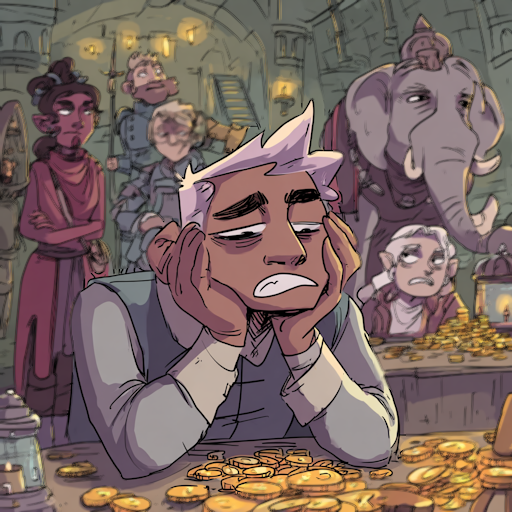Component Crafting: How to Stop Adventurers from Breaking Your Game’s Magic Item Economy
A Guide to Magic Item Balance Through Systematic Scarcity
Learn how to balance D&D’s magic item crafting system using monster components, CR-based encounters, and economic principles that create adventure hooks while preventing market flooding.
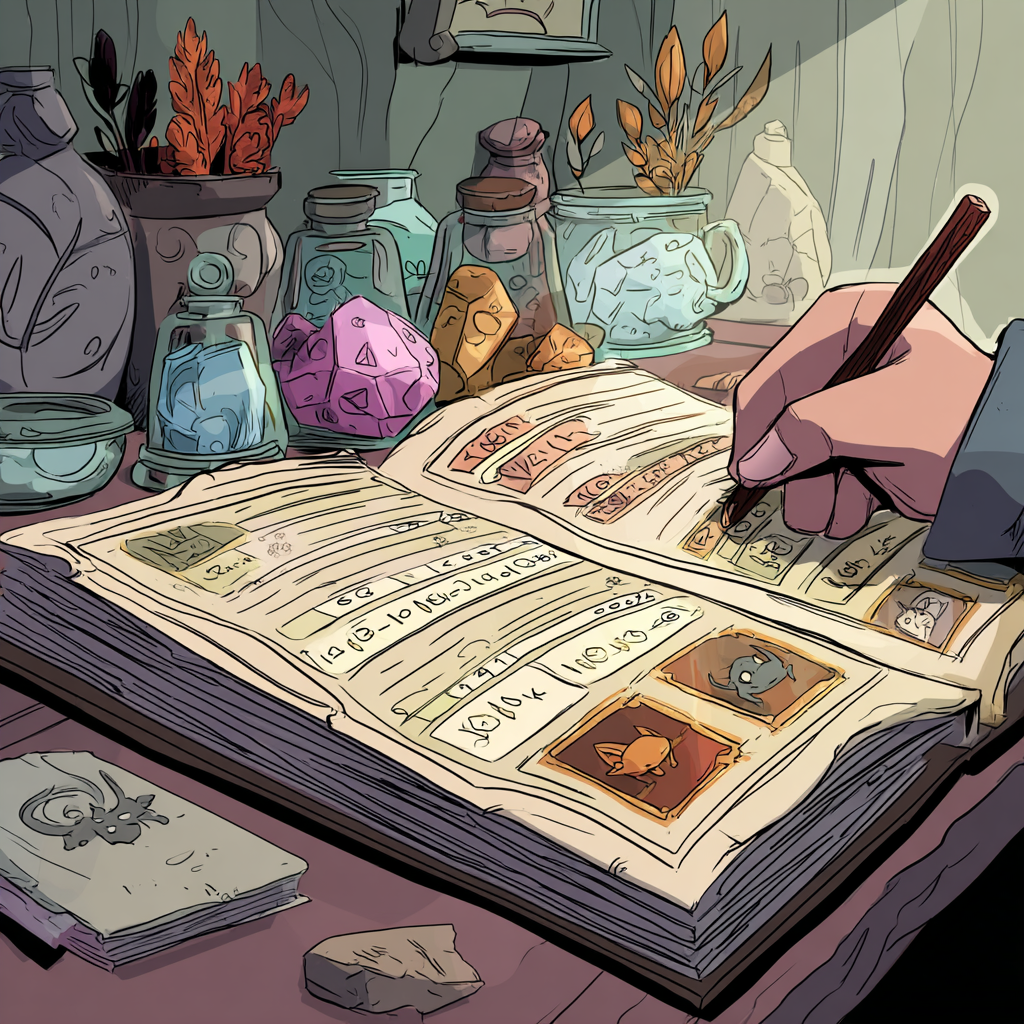
When Magic Items Are Too Easy to Make
“When adventurers can craft artifacts from thin air and copper pieces, the foundations of balance and commerce crumble like an ogre’s wedding cake.” – Galdrin the Sage
The Day The Magic Economy Collapsed
It’s a crisp autumn morning in the Market Ward, and I’m watching the third magical shop this week board up its windows. “Manny’s Magic Emporium”—a name that always made me wince—lies in ruins, another casualty of what historians will probably call “The Great Crafting Catastrophe of 1492 DR.
Merchant-Prince Androth stands amid his competitor’s wreckage, trying very hard not to gloat. “Same story every time,” he explains. “Bright-eyed adventurers discover they can craft Rings of Protection for 2000 gold and a bastion smithy, then they flood the market faster than a Decanter of Endless Water.”
Sound familiar? If you’re a DM who’s watched players turn your carefully balanced magic item economy into a craft-and-sell empire, you’re not alone. The 2024 D&D crafting rules, although good intentioned, created an unintended consequence: they made powerful magic items very easy to produce, flooding markets and trivializing items that should feel special.
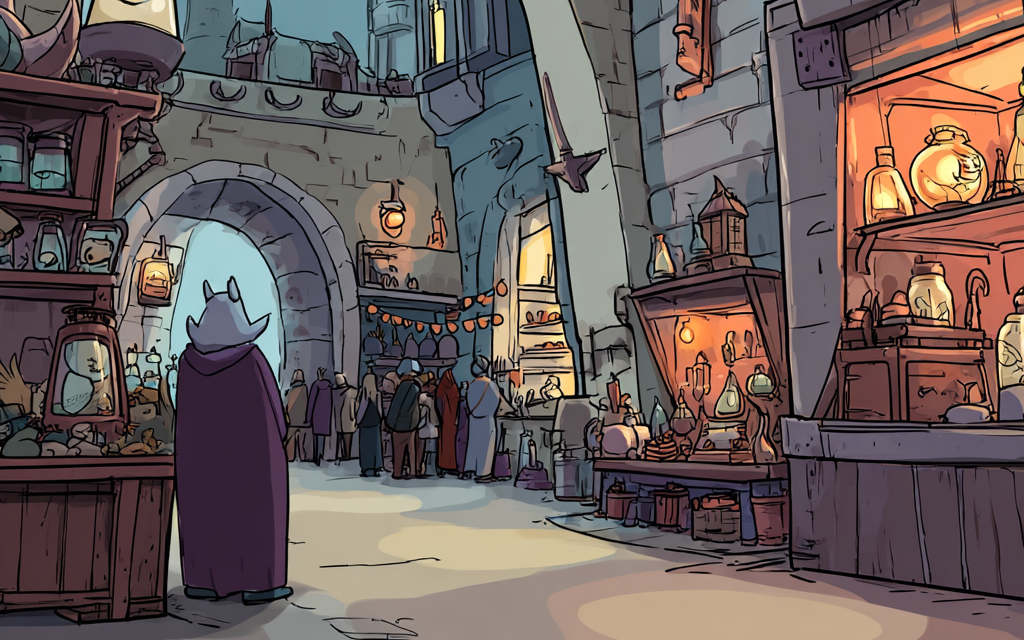
We need something better: a system that can restore control to DMs while creating adventure hooks that make your players want to hunt monsters.
The solution? Understanding what every dragon-capitalist has known for millennia: true scarcity creates true value.
Why The Traditional Crafting Rules Break Down
“The clever merchant doesn’t fight scarcity—they engineer it systematically.” – Galdrin the Sage
Before diving into solutions, let’s look at why D&D 2024’s crafting system causes problems:
The Gold-Only Problem
When magic items only require gold and time, crafting becomes a math problem rather than an adventure. If players can craft powerful magic items without rare components, quests, or limitations, it undermines the scarcity that gives those items narrative and mechanical weight. This is especially problematic in campaigns where magic items are meant to be rare and wondrous.
The Infinite Materials Issue
The DMG rules state that DMs determine whether “appropriate raw materials are available,” but provide no guidance on what makes materials appropriate or how to limit availability without seeming arbitrary. Players can theoretically craft infinite items and sell them at full price, which doesn’t reflect how real economies work. DMs have to homebrew scarcity, guild restrictions, or make up market rules to fix this.
The Market Flooding Effect
Without natural scarcity, players can mass-produce magic items during downtime, destroying the special feeling these items should provide while destabilizing your campaign balance. A broom of flying is a lot less interesting if every player has one (unless you are running a wizard academy sorta thing, but the idea is to put scarcity squarely under DM control while still allowing a fun crafting system).
The monster-component system solves all three of these problems by tying magic item power directly to adventure difficulty.
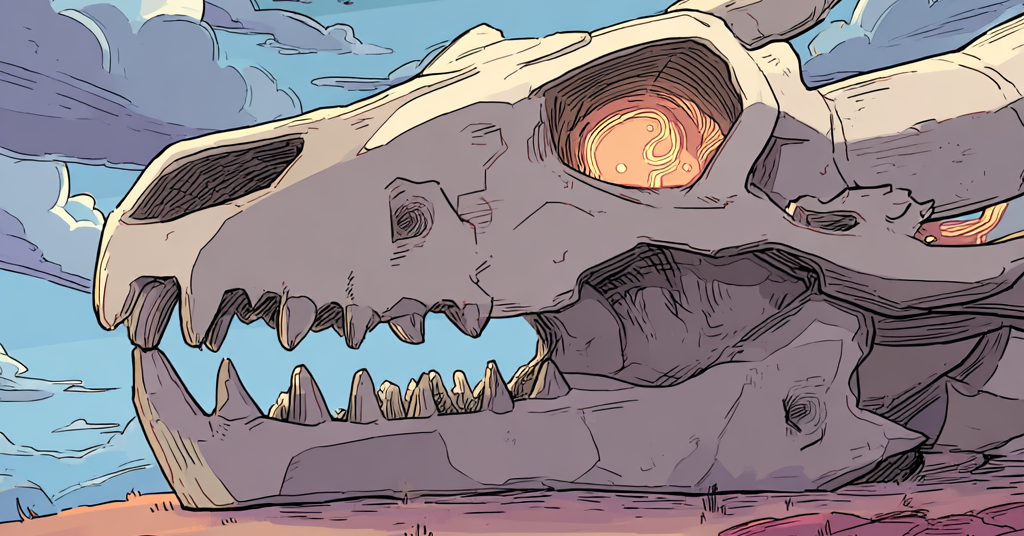
The Monster-Component System: Step-by-Step
The approach is actually pretty simple. It ensures powerful magic items require proportionally dangerous encounters to craft, restoring balance while creating adventure hooks.
Step 1: Match Item Rarity and Monster CR
Create natural scarcity by requiring components from appropriately dangerous creatures:
| Item Rarity | Monster CR Range | Example Creatures | Typical Party Level |
|---|---|---|---|
| Common | CR 1-3 | Dire Wolf, Owlbear, Ankheg | 1st-4th level |
| Uncommon | CR 4-8 | Manticore, Chimera, Troll | 3rd-8th level |
| Rare | CR 9-13 | Young Dragon, Stone Giant, Vampire | 7th-13th level |
| Very Rare | CR 14-17 | Adult Dragon, Ice Devil, Storm Giant | 11th-17th level |
| Legendary | CR 18+ | Ancient Dragon, Balor, Tarrasque | 17th+ level |
Why This Works: The correlation ensures party-appropriate challenges yield party-appropriate rewards while maintaining logical power scaling.
Step 2: Choose Thematically Appropriate Monsters
Select creatures that enhance the narrative:
- Desert Campaign: Blue Dragons for thunder weapons, Salamander for fire resistance items
- Coastal Adventure: Krakens for water-breathing gear, Storm Giants for weather control
- Underdark Exploration: Beholders for magical sight, Mind Flayers for telepathy equipment
Step 3: Identify Harvestable Components
Assign 1-3 specific monster parts that logically connect to the item’s magical properties. Fire immunity items probably need components from fire-immune creatures, for example. Flying items would require parts from naturally flying monsters. Scales, bones, claws, teeth, hide, horns, spines, feathers, blood, venom etc. are all viable components.
Step 4: Add the Requirements to the Standard Crafting Rules
Magical items still need to be worked by someone with the right skills and tool proficiencies. Gold and time costs still apply. The monster-components are just additive to give the DM a Faucet to the magic item economy.
Step 5: Layer in Complexity (Optional)
To create memorable story and narrative it’s easy to add interesting challenges into the system. Examples:
Time Sensitivity: Dragon blood loses potency after 24 hours
Environmental Requirements: Frost weapons must be forged in freezing conditions, or flying weapons can only be crafted while airborne
Magical Catalysts: Require rare astronomical events or special spell combinations
Recipe Examples
“I observed with professional interest how quickly merchants adapted. Those who thrived understood that monster hunting was just as valuable as controlling inventory.” – Galdrin the Sage
Here’s a few sample recipes:
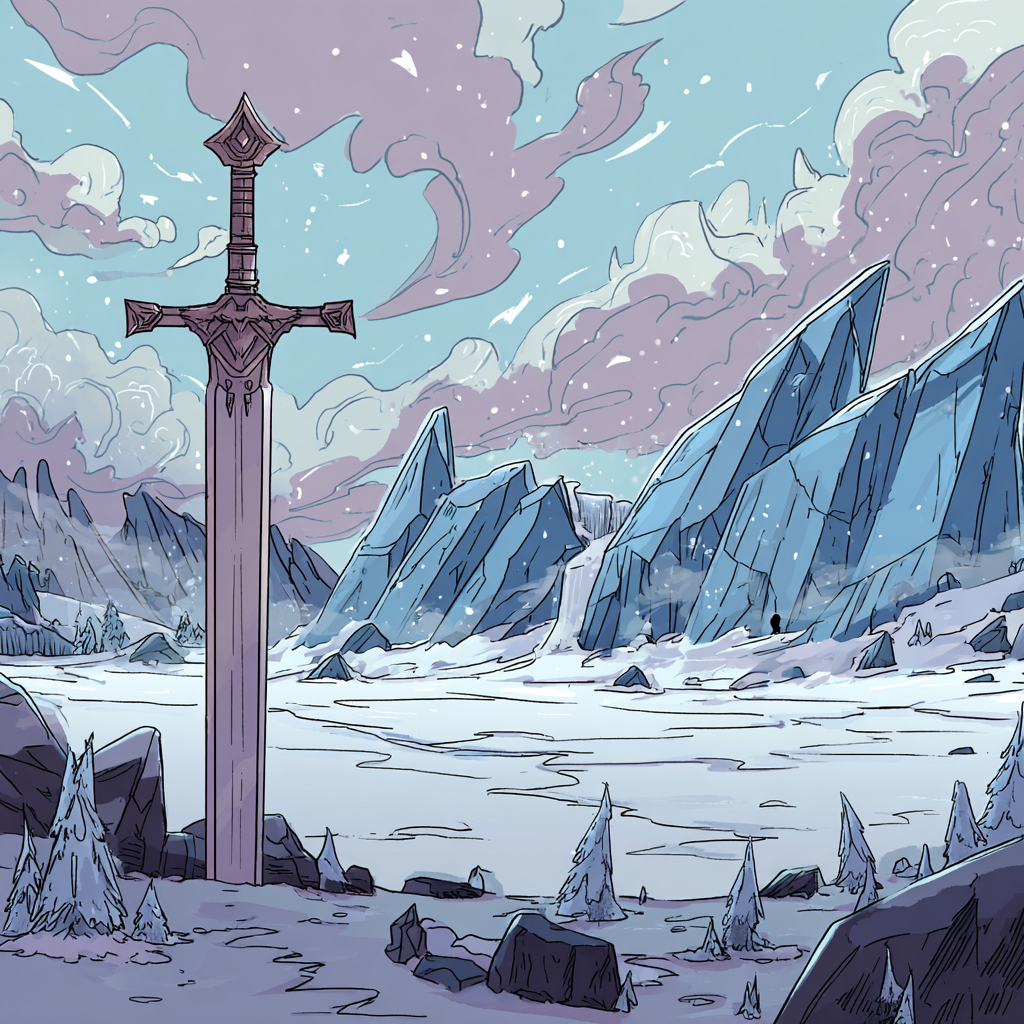
Frost Brand Longsword (Very Rare)
Monster Source: Ice Devil (CR 14) and Remorhaz (CR 11)
Required Components:
- 1 Ice Devil horn (primary magical focus)
- 2 vials of Remorhaz blood (binding agent)
- Optional: Ice crystals from a mephit or dragon’s breath
Base Requirements:
- Longsword (15 gp)
- Smith’s Tools + Arcana proficiency
- Optional: Forge capable of infernal temperatures (assumedly a magical forge)
- Optional: Resistance (Cold) spell during final tempering
Total Investment: 20,015 gp + 125 days
Adventure Hook: “The nearest ice devil is in the frigid layer of Cania in the Nine Hells.…”
Dragon Scale Mail (Very Rare)
Monster Source: Adult Dragon (CR 14-16)
Required Components:
- Adult dragon hide with (mostly) intact scale pattern, or 175lbs of dragon scales
- 3 vials of dragon blood
Base Requirements:
- Studded leather armor (45 gp)
- Leatherworker’s Tools proficiency + Arcana proficiency
- Workshop with dragon-scale processing capability
- Optional: Mending spells during construction
Total Investment: 20,045 gp + 125 days
Adventure Hook: “The copper dragon of Thunderpeak Mountain hasn’t been seen in decades…”
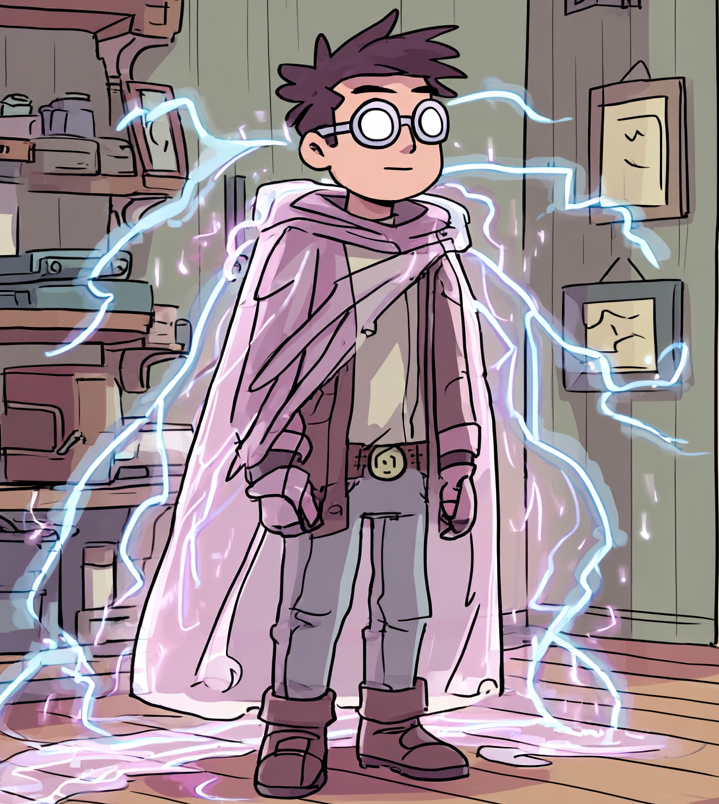
Cloak of Displacement (Rare)
Monster Source: Yochlol (CR 10) and Displacer Beast (CR 3)
Required Components:
- Displacer beast hide
- 2 Yochlol tentacles
Base Requirements:
- Fine cloak (clothes) (15 gp)
- Leatherworker’s Tools proficiency + Arcana proficiency
- Optional: Blur or Mirror Image spell during enchantment
Total Investment: 2,015 gp + 50 days
Adventure Hook: “Displacer beasts have been spotted near the haunted wizard tower…”
Balancing Your Campaign: Faucets and Sinks
“The fascinating aspect was how quickly successful crafters began thinking like dragons—hoarding what was scarce, spending what was abundant.” – Galdrin the Sage
You can fine-tune the system so that it fits your campaign’s economic and progression balance. Want a tighter magic item flow? Make component preservation tricky – make monster migrations seasonal. Want to push more exploration in your game? Limit access to monsters by environment, forcing the party to travel to the desert or the artic for certain components they want.
Lower the Faucet:
- Monster Encounter frequency and difficulty are the initial gate
- Skills (survival) and tool proficiencies can be required to harvest
- Timing and component fragility (need to craft within X days of harvest, or preserve the component in some way)
Increase the Faucet:
- Introduce secondary markets for components (purchasing from other adventuring parties, monster hunter organizations, or Black market dealers)
- Components can be quest rewards or patron payments
- Components can be found as part of other treasure hoards
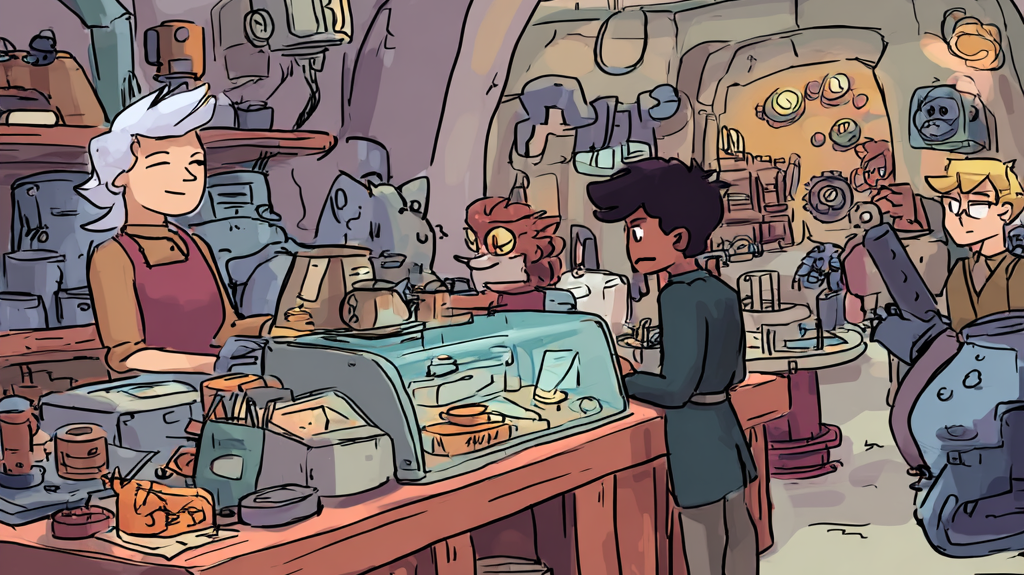
Economic Sinks
Mostly this is just players spending raw gold on the base gold crafting costs. Other potential sinks you can use:
- Workshop rental costs
- Requiring specialized equipment or consumables (like spell components) for crafting
- Tool, shop, or bastion maintenance
- Components spoil without special transportation or preservation requirements
- Require crafting skill checks during item creation. Failed checks destroy materials
- Tax monster hunting as a commercial activity
Other Balance Mechanisms
You can create demand side conditions or market friction to further balance and tweak your specific campaign. These conditions can also be fun story/adventure hooks.
- Add NPC crafters that compete for the same materials
- Merchants who sell fraudulent components
- Local nobles create trade restrictions and regulatory barriers
- Implement conservation laws with hunting quotas
- Introduce seasonal patterns affecting creature access
- Create territorial conflicts between factions hunting for the same creatures
Implementation Tips for DMs
Start Small
Begin with one or two items using this system rather than converting everything at once. Let players experience the system (and adventure hooks) before expanding the approach.
Maintain Player Agency
Always provide multiple paths to components. If players can’t face an ice devil directly, perhaps they can trade with someone who did, or find alternative creatures with similar properties.
Create Moments
The best component harvesting creates stories players tell. Focus on dramatic encounters where success, and the corresponding magic item crafted, really feels earned.
Finally – remember that the goal isn’t to make crafting impossible, but to make it feel special.
The Wrap Up
Months after Blackstaff’s Bargain Basement collapsed, I returned to assess the long-term effects. The empty shop had become “Androth’s Adventure Acquisitions,” bustling with activity unlike anything I’d seen.
Gone were the dusty shelves of arrows and scimitars. Instead, I found expedition planning stations, component authentication equipment, and heavily warded preservation vaults. Charts showing monster migration patterns covered the walls alongside current market prices for everything from basilisk scales to beholder eye stalks.
“Business is better than thriving,” Androth told me, gesturing toward an artificer carefully examining dragon blood through a magnifying lens. “We’ve created something that benefits everyone. Adventurers get premium prices for materials. And crafters get fresher, more potent components.”
“And there’s something special about it all.” Androth continued quietly. “These items carry the story of their creation. When someone wears that Dragon Scale Mail, they’re protected not just by magic, but by the courage of the fighters who faced down the dragon, the skill of the crafter who transformed its sacrifice, and the wisdom of the wizard who helped create that recipe and make the armor real.”
